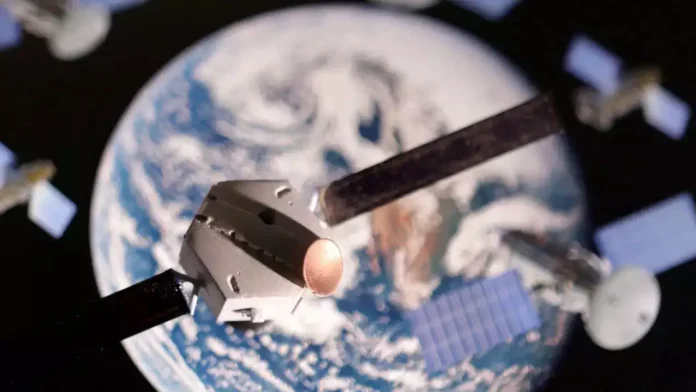In a major step for space communications, researchers in China have demonstrated a satellite-to-Earth laser link that delivers data at 1 gigabit per second. That speed outpaces SpaceX’s Starlink by a factor of five. The experiment relied on a low-power 2-watt laser mounted on a geostationary satellite roughly 36,000 kilometers above Earth.
Using a 1.8-meter telescope at the Lijiang Observatory in southwest China, the team led by Professor Wu Jian (Peking University of Posts and Telecommunications) and Liu Chao (Chinese Academy of Sciences) overcame a long-standing problem: atmospheric turbulence. Turbulence causes laser beams to scatter and weaken on their way through the air. By combining Adaptive Optics (AO) with Mode Diversity Reception (MDR), they corrected distortions in real time. A grid of 357 micro-mirrors reshaped incoming light, while a custom chip routed the clearest signal paths to the receiver. This approach raised the link reliability from about 72 percent to over 91 percent, according to the paper published in Acta Optica Sinica.
Previously, in 2020, China’s Shijian-20 satellite set a record with a 10 Gbps laser downlink, though its power details remain secret. U.S. attempts to intercept that signal reportedly led Shijian-20 to perform evasive maneuvers. Such moves highlight the strategic value of secure, high-speed links that can support military, scientific, and commercial applications.
How the System Works
First, the satellite emits a narrow laser beam toward Earth with just 2 watts of power, less than a typical household desk lamp. As that beam crosses the atmosphere, it faces distortions that scatter its photons into speckled patterns. The AO system uses micro-mirrors that adjust hundreds of times per second to reshape incoming light into a coherent beam. At the same time, MDR splits the signal into multiple modes or paths. A fast algorithm running on a custom chip selects the strongest paths, effectively filtering out noise and turbulence.
During tests, the ground station at Lijiang decoded the data stream without dropouts for extended periods. Engineers believe the same setup can scale to multiple satellites and ground stations, paving the way for a network that rivals fiber-optic capacity in space.
Global Implications for Satellite Internet
As demand grows for high-speed, low-latency internet around the world, companies like SpaceX, OneWeb, and Amazon’s Project Kuiper have raced to build low-Earth-orbit constellations. Those systems rely on hundreds or thousands of small satellites at altitudes around 550 kilometers. Laser links promise higher bandwidth and lower latency than radio–frequency connections, but they face more technical hurdles.
China’s success signals that geostationary laser satellites could handle trunk lines—backbone links between continents—while LEO constellations serve local users. In time, a hybrid network could link ground stations, ships, and remote regions without relying on undersea cables.
Short Analysis
This result shows China is serious about leading in space communications. Achieving stable 1 Gbps over 36 000 kilometers with just 2 watts of power suggests the technology will scale. I expect China to expand tests to multiple orbiting nodes and even include intersatellite laser links. As a result, global internet infrastructure may shift toward space more than ever before. In turn, companies like SpaceX will have to speed up their own laser development or risk falling behind.
Sources: South China Morning Post

